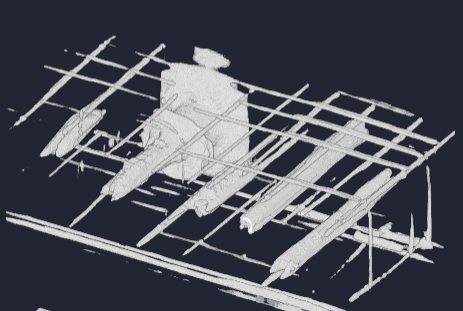Supervisors: Madis Kiisk (GScan) & Siiri Salupere (University of Tartu)
GScan is a deep-tech company which develops cosmic ray tomography for Non-Disruptive Testing (NDT), medical applications and non-intrusive investigations. GScan has invented large, high-resolution muon trackers, its scalable production technology and the state-of-the-art, AI-based data analysis for 3D reconstruction of the interior structures and material classification. With more than 35 R&D staff members, out of which 9 PhDs, we cover expertise areas from particle physics, muon tomography and data science till mechanical and electronic engineering.
Muon tomography is rapidly developing technology, it is based either on muon absorption or coulomb scattering effect. The latter enables 3D reconstruction of small objects together with their material composition. This technology has already been implemented in nuclear and NDT applications, while the medical applications still in the feasibility phase. Applying a novel muon and electron source, developed in the framework of the EPACE project at DESY, opens many new possibilities for muon tomography. An artificial muon source has a potential to be used in medical applications and offers a new modality for radiological imaging and analysis. At the same time the muon and electron source have a strong potential in NDT for structural and material analysis, making short-time investigations possible.
The objective of this PhD project is to explore the generation of muons, electrons and positrons from a compact laser-driven plasma accelerator combined with a converter target. The application of these beams to a medical tomographic system will be studied. Suitability of the GScan plastic scintillation-fiber based trackers will be investigates. The work includes modelling with Monte Carlo method, detector design, tomographic and classification algorithms. The aim of the research is to study:
- How the GScan tracker detectors needs to be adapted for the artificial muon source – finding a balance between the muon flux density and detector’s detection capacity
- What adaptions the artificial muon source requires in implementing the tomographic reconstruction methods developed for natural muon sources and what benefits to expect in medical imaging
Expected Results
- Demonstration of the suitability of the GScan muon tomographic technology for medical and non-destructive testing applications
Planned secondments
- Scientific visit to DESY

